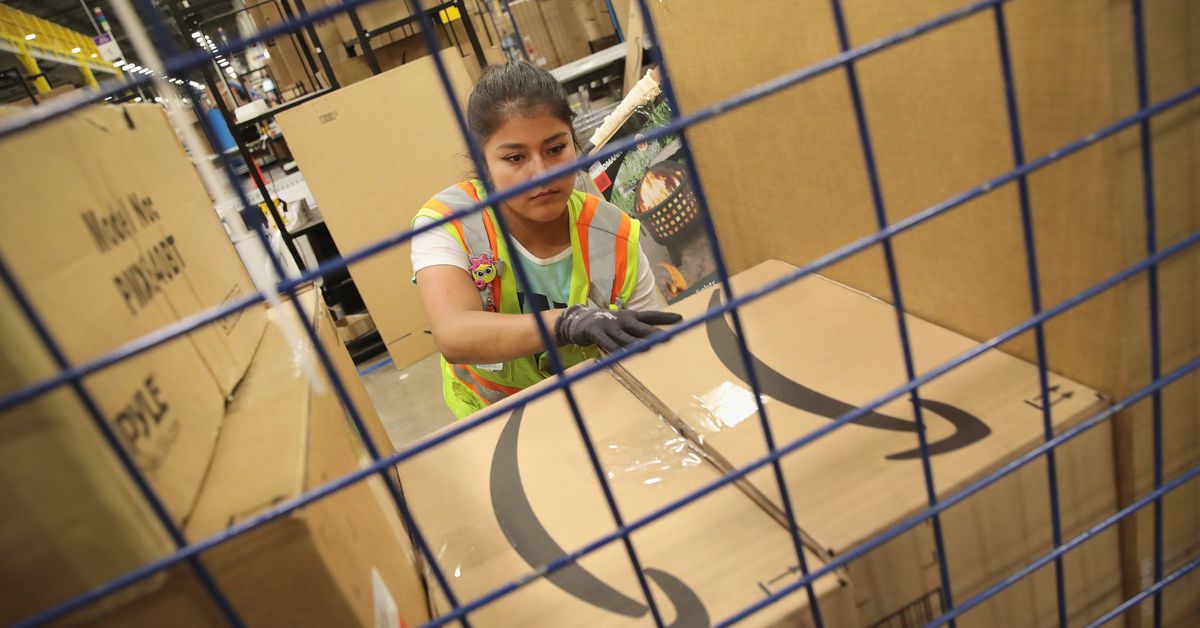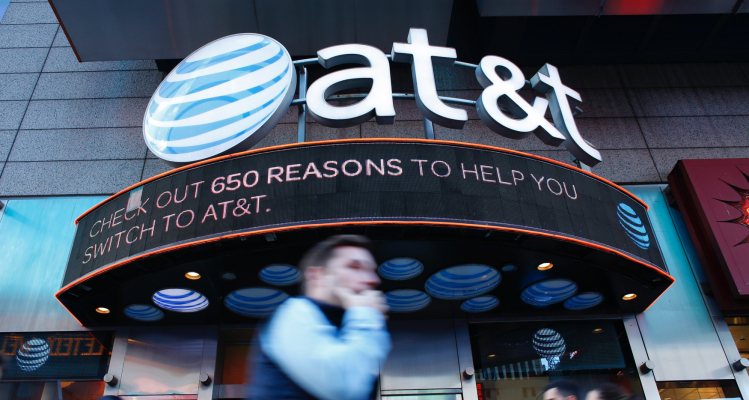
Amazon has always presented its Marketplace, where outside businesses sell products through Amazon’s platform, as one of its biggest success stories: mutually beneficial to Amazon, sellers, and customers alike. But a new report says those benefits are increasingly lopsided — in Amazon’s favor.
The report, which comes from the nonprofit Institute for Local Self-Reliance (ILSR), asserts that Amazon takes a larger and larger cut of sellers’ earnings through the various fees it levies on them. These fees have become so lucrative for Amazon that they now represent the company’s most profitable segment as well as its fastest-growing revenue stream, according to ILSR. And because sellers are paying Amazon high fees, customers may face inflated prices, even when they shop beyond Amazon’s borders.
“Amazon is the only winner here,” Stacy Mitchell, ILSR co-director and author of the report, told Recode. “It’s exploiting its monopoly power over these small businesses to pocket a huge and growing cut of their revenue.”
You might consider this to be a good business strategy on Amazon’s part, as it’s certainly paid off for the company. And some sellers on Amazon’s platform say they’re happy with the arrangement — at least, for now. But a growing number of others argue that Amazon’s dominance over the e-commerce market and its power over its sellers has given rise to anti-competitive practices that hurt Amazon’s competitors, competition in general, and consumers.
“Amazon’s dominance is bad for businesses, jobs, and America’s competitiveness,” Rep. David Cicilline, chair of the House Judiciary Antitrust Subcommittee, told Recode. “This important study makes clear that Amazon is crushing sellers through abusive policies that make it nearly impossible for everyday businesses to get ahead.”
These are some of the same issues identified by regulators and lawmakers who have accused Amazon of abusing its market dominance. They say it’s further evidence that action must be taken to curb Amazon’s power — and some of them are already working on legislation.
“It is important to understand how tech platforms can exploit their power to hurt small businesses and raise prices for consumers,” Sen. Amy Klobuchar, chair of the Senate Judiciary Antitrust Subcommittee, told Recode. “This report highlights how Amazon’s tactics can lead to that result and why Congress must act to set clear rules of the road for the digital giants that dominate our online economy.”
Amazon disputes the report’s findings, calling it “intentionally misleading” for lumping its mandatory fees and optional services together as “seller fees.” Amazon maintains that all of its fees — mandatory and optional — are competitive with what similar services charge, and that many sellers are successful without taking advantage of those optional services. But Mitchell says many sellers feel compelled to pay those ostensibly optional fees if they want their businesses to stay afloat.
Marketplace: The gift that keeps on giving (to Amazon)
Marketplace is a huge part of Amazon’s business. In his 2020 letter to shareholders, Jeff Bezos said it accounted for nearly 60 percent of Amazon’s retail sales, which come from nearly 2 million sellers. So when you buy a product on Amazon, chances are it was sold by an independent business using Amazon’s platform. Amazon isn’t providing that platform for free.
“The trade-off that any seller is dealing with is you get access to a huge audience, you get access to scale, the ability to scale your sales, but it comes at a cost to margin,” Andrew Lipsman, principal analyst at eMarketer, told Recode.
The cost to sellers is increasing every year, according to ILSR’s analysis, making business unsustainable for some sellers while Amazon’s profits grow.
The new ILSR report found that Amazon’s seller fees accounted for an average of 19 percent of sellers’ earnings in 2014. That’s almost doubled to 34 percent in 2021. And while seller fees accounted for 14 percent of Amazon’s entire revenue in 2014, that figure is up to 25 percent in 2021. Amazon will pull in $121 billion from seller fees alone, ILSR estimates.
That revenue translates to a lot of profit — more than even Amazon Web Services (AWS), Amazon’s cloud computing platform typically believed to be the company’s most profitable arm. AWS netted $13.5 billion in 2020, according to Amazon’s financial data. ILSR estimates seller fees netted $24 billion. (Amazon says these figures are inaccurate but did not provide its own; the company’s public earnings statements also don’t combine seller fees in this way.)
“Everyone thinks AWS generates all of Amazon’s profits,” Mitchell said. “But in fact, Marketplace is this massive tollbooth that gushes profits.”
Seller fees primarily come from three things: sales, fulfillment, and ads. Every item sold is subject to a referral fee, which is Amazon’s commission. Over the years, that’s stayed pretty consistent at 15 percent (it may be lower or higher, depending on the product category). According to ILSR, those referral fees made up the majority of seller fees as recently as 2017. Since then, however, the majority of fees come from Fulfillment by Amazon (FBA), Amazon’s service that stores, packs, and ships sellers’ items to customers. Ad revenue is steadily gaining ground as more sellers pay for more ads to get prominent placement on Amazon’s site, including on product pages and search results.
Sellers who use FBA pay Amazon a fee based on the size and type of item they sell. Sellers also have to pay to ship items to and from Amazon’s fulfillment centers and to store them there. For some sellers, this might be a cheaper or easier option than doing it all themselves. Amazon says FBA’s pricing is competitive with similar fulfillment services if not cheaper, and sellers aren’t required to use it.
But help with logistics isn’t the only appeal of FBA for many sellers. Enrolling in the FBA program is the only way that most sellers can qualify for Prime. (Some sellers may qualify for Seller Fulfilled Prime, but it’s not accepting new enrollees at this time.) Getting that Prime badge is huge for a seller. Amazon shoppers — especially those 200 million Prime members — are far more likely to buy products that qualify for Amazon Prime. But that’s not only because they want to take advantage of the free shipping. It’s also because customers may not even see non-Prime offerings in the first place, thanks to the mechanics of the so-called Buy Box.
FBA aside, there are other ways sellers are paying Amazon more and more in the hope of generating sales. Amazon has been making a big push into digital advertising recently, and seller ads are part of its strategy. Critics have accused Amazon of increasing the number of sponsored slots in search results to increase ad inventory, and of charging more for the ads in them. (Amazon says the number of ads varies, and pricing is determined by an auction.)
Because of this, some sellers feel like they’re paying more and getting less. Amazon itself says these ads increase product visibility, which can translate into more sales. But that also means less visibility for the products in organic search results that earned their placement through strong sales and positive reviews. Sellers are already competing for this space with Amazon’s own products, and that competition might not be fair, as Amazon reportedly ranks its own products above others that had higher ratings. (Amazon has disputed these reports and says its ranking models don’t take into account whether the product is made by Amazon or offered by a third-party seller.)
Either way, many sellers increasingly feel pressure to buy ads just to get the same search placement (and sales) they once got for free. In a statement to Recode, Amazon maintained that FBA and ads are not mandatory and that sellers may find them beneficial.
“Sellers are not required to use our logistics or advertising services, and only use them if they provide incremental value to their businesses,” an Amazon spokesperson said.
How sellers’ problems affect your wallet
If you’re not a seller that relies on Amazon to survive, you might not see how any of this affects you. If you’re an Amazon customer, you might even think that this system is ensuring that you can buy products at the best price. But you might be wrong.
“Whether you shop on Amazon or not, you are paying higher prices because of its monopoly power,” Mitchell said.
When sellers have to raise their prices to account for Amazon’s increased fees, they often pass those costs along to the customer. And, thanks to Amazon’s fair pricing policy, sellers have to offer the same price on other platforms that they do on Amazon — even if their costs to sell on those platforms are less. If they don’t, Amazon may suspend or demote their listings. Sellers don’t want to take that risk, which could be potentially devastating to their business.
“Small businesses don’t have other options when it comes to the digital economy,” Rep. Ken Buck, the ranking member of the House Judiciary Antitrust Subcommittee, told Recode. “Amazon continues to use their monopoly power to crush competition.”
One solution is for lawmakers and regulators to step in. Some are trying: The European Commission announced last year that it is investigating whether Amazon gave preferential treatment to itself and sellers that used FBA when determining who gets the Buy Box. The fair pricing policy and its potential to inflate prices across the internet is the basis of the District of Columbia’s lawsuit against Amazon, as well as a class action lawsuit filed by Amazon customers last year.
Several members of Congress — Buck, Cicilline, and Klobuchar among them — have introduced bills that would forbid some of Amazon’s practices they believe to be anti-competitive. These bills came out of a 16-month-long House antitrust subcommittee investigation into Big Tech companies, including Amazon. The committee accused Amazon of luring in customers and sellers with artificially low prices and Prime memberships that the company loses money on, only to raise rates as soon as Amazon’s market dominance was assured.
The proposed legislation would forbid Amazon from giving its own products prominent placement, unless it earned that place organically, and from requiring sellers to pay for ads or services like FBA in order to get preferred placement. One bill would forbid Amazon from competing in a marketplace it also owns, and could force Amazon to split off into a first-party sales company and a company that operates a platform for third-party sellers.
Amazon has responded to all of this by denying that such measures are necessary or that it’s doing anything wrong. The company has become one of the biggest lobbying spenders in the country, and it’s been emailing select sellers to warn them that pending antitrust legislation could make it difficult or impossible for them to sell their products on Amazon.
After years of studying Amazon’s business practices, Mitchell, of ILSR, thinks the best solution is arguably the most drastic.
“Policymakers could regulate Amazon’s fees — basically accept it as a regulated shopping monopoly, like a utility,” she said. “But I think a much better, more market-oriented approach is to break it up by splitting Amazon’s major divisions into stand-alone companies.”






